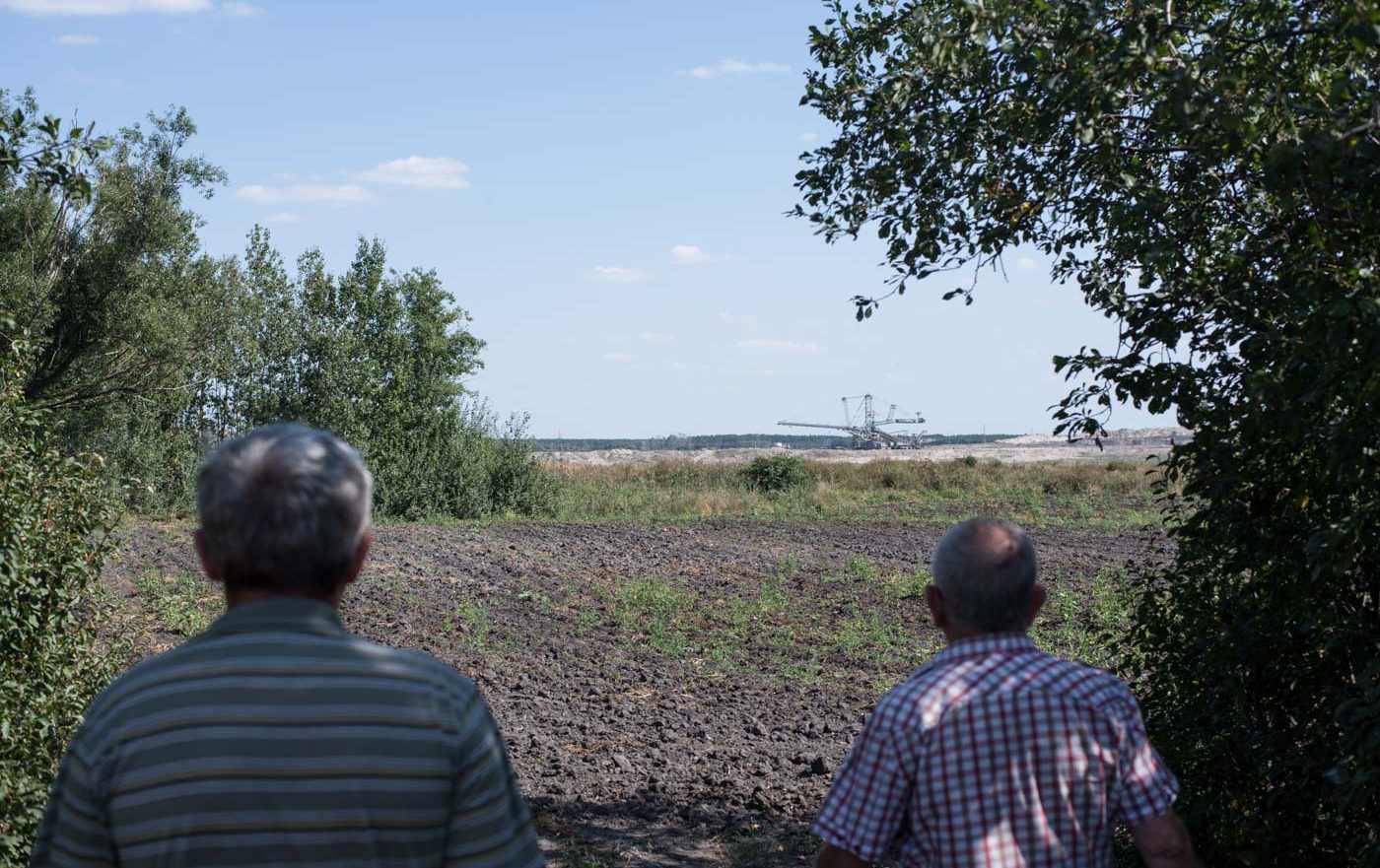
Even before the excavation I said, ‘You’ll see what will happen with the water and the trees. Everything will dry out.’ But hardly anyone believed me. As the mining started and the water in the ponds began to disappear, they started saying, ‘I think Piotrek was right.’ But it wasn’t until the trees began to wither that the farmers really understood their situation. ‘Damn. Piotrek sure was right.’
During our conversation with Piotr Krygier we laugh a lot, although the situation is serious. Retired after working for many years as a black coal miner in one of Silesia’s mines, Mr. Krygier has returned to his hometown of Galczyce. His children suffered from poor health so the doctor ordered the family to move to a friendlier environment. The land of Wielkopolska (Greater Poland), with its many lakes, seemed like a good choice to recover as well as to engage in agriculture. Most people in the region depend on agriculture for their living, and many of them earn money from tourism. The most powerful business entity in the area, however, is the corporate group which owns mines and power plants, and provides about four per cent of the national electric energy supply. When we finally managed to find the small farm in Galczyce, the host invited us home and offered coffee. We start talking about the problems related to open-pit mines, and there are so many of them that we hardly know where to start.
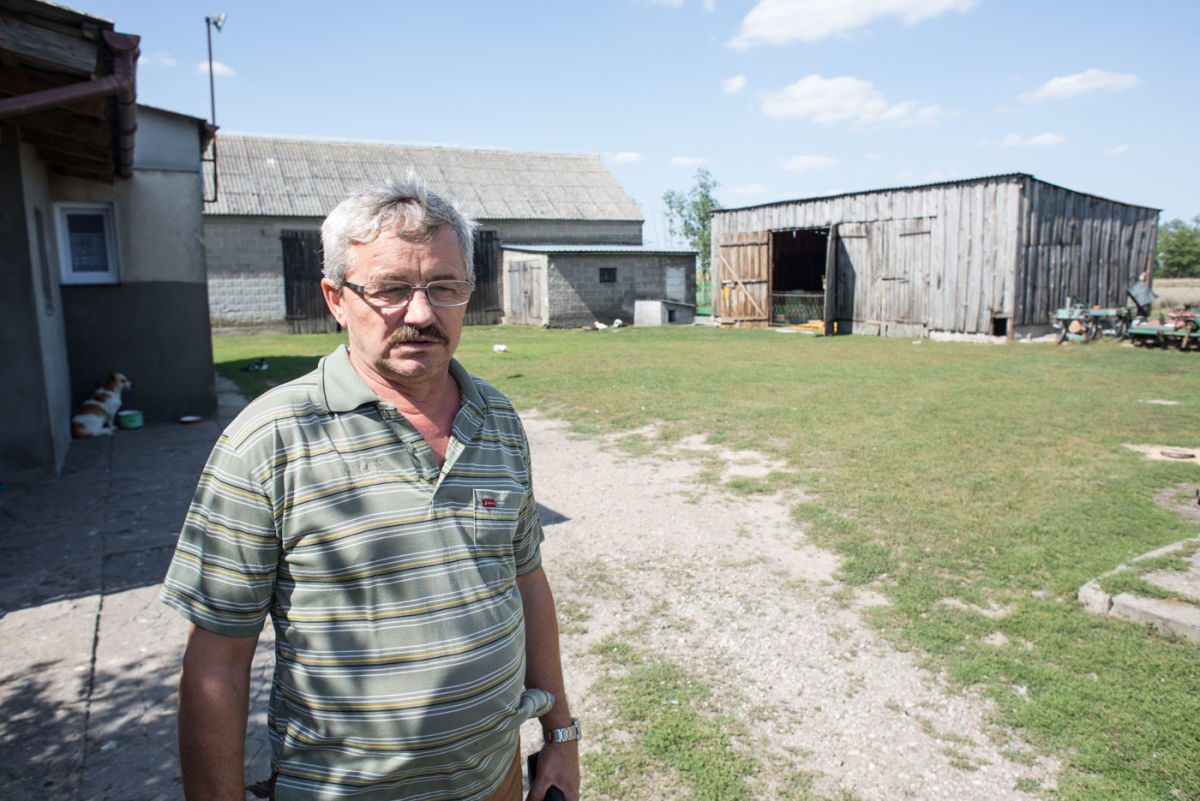
Mr. Krygier says that they moved to Galczyce in 1997, and his wife, Małgorzata Krygier, adds: “If we had known there was a mine here, we would not have come”. His home is three hundred meters away, and his wife’s hometown is Kryszkowice, a village in the same municipality. The Tomisławice open-pit mine is located five hundred meters from their farm, and from the yard they can see a gigantic heap of soil, which theoretically should have been remediated, but the owners of the corporate group Pątnów-Adamów-Konin Power Plants Complex (ZE PAK) apparently skimp on it. The group has not been able to profit from its operations for a long time, so it cuts costs where it can.
The environmental permit enabling the formation of the pit in Tomisławice was issued in 2007, the concession was granted in 2008, and the overburden began to be removed on 10 April 2010, a memorable day. A friend called Mr. Krygier, who at that time was staying in a sanatorium, and told him that the miners were filling up fishponds with dirt. The farmers were trying to catch carp before they were buried alive. The mine had the right to do so because it owned the land, but this approach illustrates the attitude of the mine’s managers to living and non-living creatures.
In order to mine coal, it is necessary to get rid of people and nature from the area where the mine is to be located. Houses, farm buildings, even churches or firehouses (often funded by locals) need to be destroyed. The mine has no mercy. It must devour everything. ZE PAK representatives supposedly claim that they buy land for three times the market value, but Mr. Krygier thinks this is rarely the case. Buying out begins with land where the soil is degraded. “The sixth soil valuation class, dry sand”, as described by Mr. Krygier, and there they pay more. Then the rumors spread about how generous the mine is. “And once they nest in a given area, all they say is ‘get lost!’”, the former miner says. The value of the surrounding land drops and in the end people prefer to sell it as soon as possible, while it still has any value.
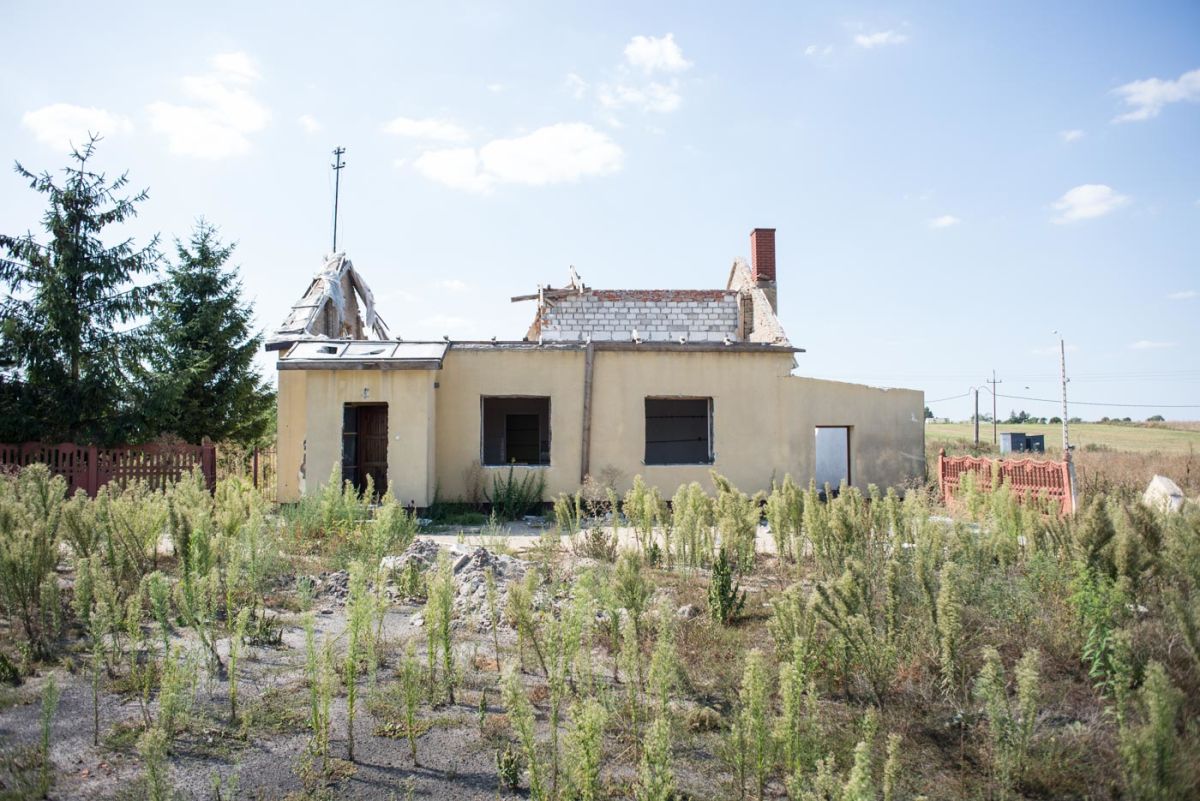
Mr. Krygier warned the villagers of the threats posed by open-pit mining. According to company figures, the Tomisławice mine pumps out 60 million cubic meters of water a year, but the former miner suspects that it may be much more. Tomisławice is a small operation too, the size of a large gravel pit. Mr. Krygier says that when his neighbor was drilling a deep well eight years ago, water was found at a depth of five meters, and now it is thirty-nine metres deep. This means that the level of groundwater has fallen by thirty-four meters, just one and a half kilometers from the pit.
A disaster for agriculture
According to Mr. Krygier, the mining sink-hole for a pit of this size can reach ten kilometers for surface water, and several dozen metres for deep water. While some technologies can stop the loss of water, these are still costly and so would eat into profits. It is cheaper to transfer the costs to the community. According to estimates, the value of coal extracted from ever expanding open-pit mining operations is already significantly lower than environmental and agricultural activity losses.
“The loss of revenue from agriculture and the agricultural processing industry resulting from the planned area of the excavation and the area covered by the mining sink-hole of the Ościsłowo open-pit mine will amount to approximately 100 million zloty (23 million EUR) annually. These losses will be borne by the local economy for about 50 years (about 20 years during the open-pit operation time and about 30 years of restoration of the underground aquifer), which amounts to 5 billion zloty (1 billion EUR) – as much as the projected income of the PAK KWB Konin from coal mined in Ościsłów”, according to a paper from Dr. Benedykt Pepliński.
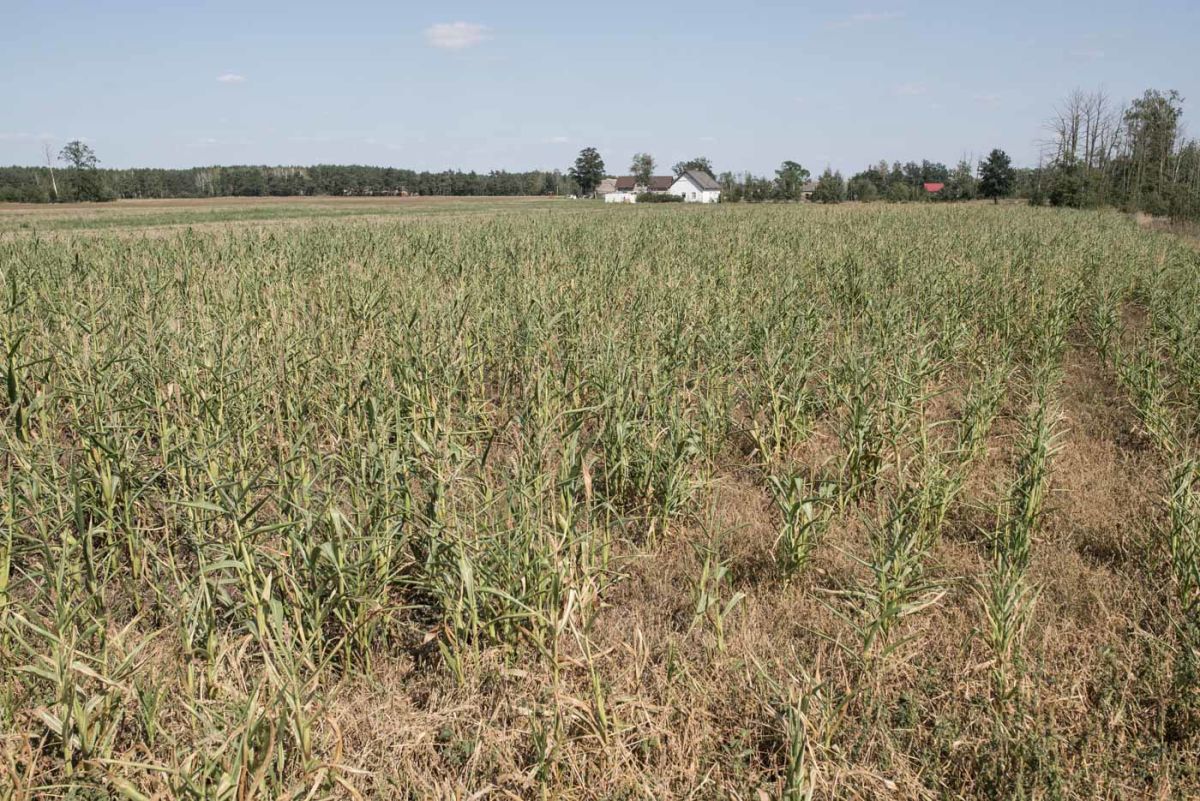
There are also environmental losses. For example, “open-pit mining in the Noteć river drainage basin has caused disturbance of water flows in the river. We want to counteract this situation”, said Dr. Jan Szyszko when he was still the Polish Minister of Environment. Szyszko announced that the cost of a rescue project for Noteć (which had dried up on a stretch of 40 kilometers) would amount to 130 million zloty (30 million EUR).
However, the biggest losses are borne by local farmers. Mr. Krygier believes that the mine should offer them compensation annually. Instead, the mine claims that it does not drain the area, and it is not the mine that should be blamed for farmers’ losses, only drought and global warming in general. At the same time, the mining company has willingly signed settlements with farmers which state that for fifteen years, farmers will not make any claims against the company (regarding a loss of water, crop losses and the like). As part of such settlements, farmers are payed several thousand zloty (less than 1,000 EUR). For four years, Krygier fought a legal battle with the mine, finally proving in court that the mine is responsible for the drainage of the land.
Mr. Krygier had been irrigating his crops with water from two ponds on his lot. He was unlucky, because apparently, he says, the mine hit a water vein that passed through his plot. A year after mining operations started, the ponds began to dry out. After two years, in 2012, the water disappeared within two weeks, ‘as if you pulled a drain stopper in a bathtub,’ he says. All that remains now from the old ponds is a basin overgrown with bushes. Małgorzata Krygier adds that the mine claimed it was because of a drought, but the neighbors’ ponds have not dried out. “Is it just a drought? This is laughable”, she says. Along with the Krygiers’ ponds, the well has also dried out, and the trees and crops have started to wither. Without irrigation it is virtually impossible to sell vegetables, because people expect high quality products.
Mr. Krygier had to give up farming, like most of his neighbors whose ponds and wells finally dried out. Mr. Krygier filled in his well, lamenting that within his lifetime, it will no longer provide water. I ask if it is possible to calculate how big his losses are. It turns out that for the purpose of the trial, Mr. Krygier has hired an expert who estimated his losses at more than forty thousand zloty annually (10,000 EUR). However, the judge rejected these estimates and hired another expert who found that the losses were half of that.
Finding an expert was not easy. When he asked agricultural experts from the area if they would estimate his losses for the purpose of the lawsuit against the mine, everyone was reluctant. For that reason Mr. Krygier had to hire a specialist from a town near Włocławek, 50 kilometres away. “It seems that in this region the courts and the mine formed a coterie”, he says. “That’s why if the government was really willing to do something about the courts, it should would done something long ago.”
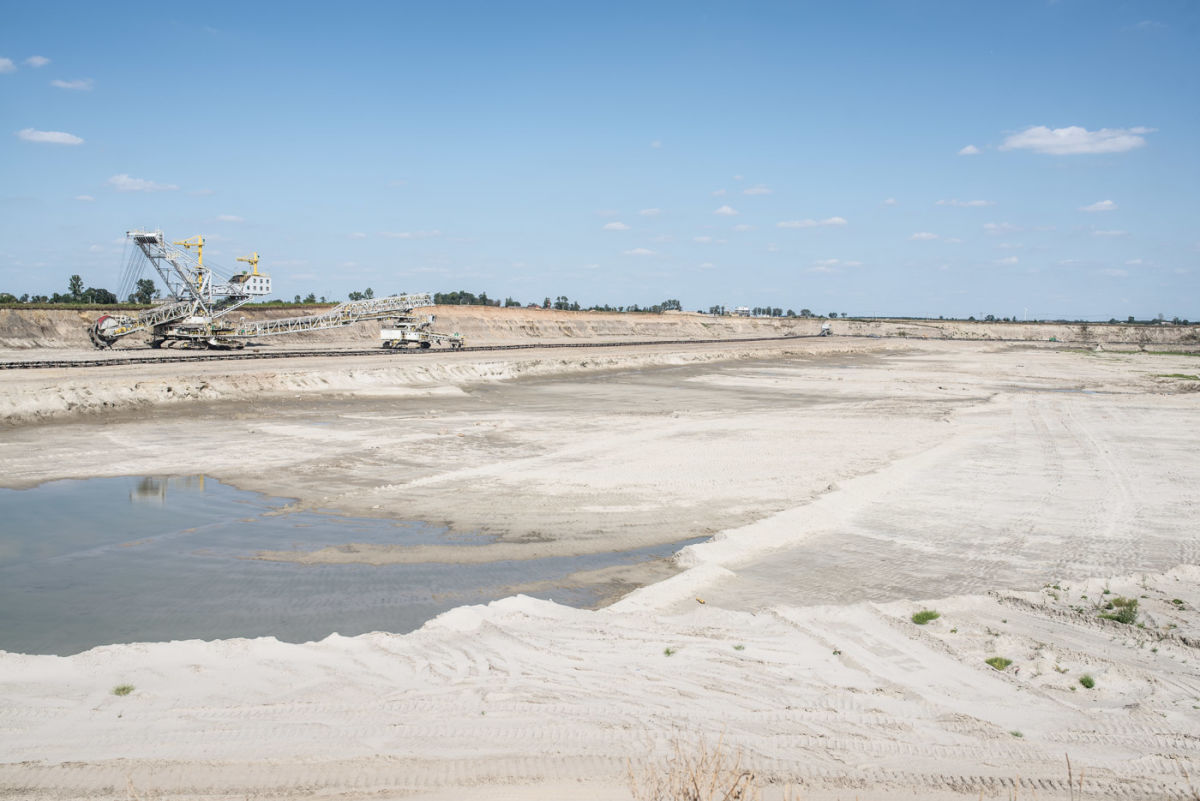
The coal company is king
The story of the local residents’ legal battle – which, after eleven years, finally ended with a supreme administrative court verdict upholding an earlier ruling that the environmental permit allowing the construction of the Tomisławice open-pit mine was issued in violation of the law – is outrageous. During all those years that the justice system needed to recognise the fact that the environmental permit was issued without proper examination of the impact of the mine on the environment, including habitats and areas covered by the Natura 2000 programme, all community members already experienced the negative impacts of the mine on their lives and the environment.
It is understandable that many people are frustrated and support the Law and Justice party (Prawo i Sprawiedliwość) in an attempt to demolish the Polish judiciary. It is easy to believe that the courts are more concerned with maintaining good relations with the mine than the law.
Nevertheless, its rulings have been favorable to the farmers, and the case will most likely end with the mine being shut down as soon as the environmental permit is canceled. This may be too little, too late, as farmers will not be able to work the land for decades to come, and ZE PAK continues to avoid paying any compensation. “The energy-coal lobby is a clique, “ says Mr. Krygier. “This is why they want to keep things as they are”.
I argue that the new government does little to modernise the Polish energy system, and that it actually plans to develop new open-pit mines. In the Konin region, for instance, the Ościsłowo open-pit mine is planned, though its fate is uncertain. In the middle of the planned pit area, archaeologists have discovered a complex of two ancient cemeteries, including the burial mounds of Lusatian culture and Neolithic chamberless tombs. The cemetery was built five and a half thousand years ago, which means that it is older than the Egyptian pyramids, and this year it was included in the register of cultural heritage. The archaeologists’ discovery seems so valuable that even a powerful energy lobby is helpless. However, it is paradoxical that the existence of these Neolithic tombs, and not the well being of the present environment or the Polish people, is able to stop the mining industry from expanding.
I ask how many local residents had to give up farming. Mr. Krygier’s estimates all of those who do not have deep water wells. He himself wanted to buy another one, but then he also would have had to invest in agricultural machinery and other equipment. He didn’t have enough money to build a deep well, which would have cost at least seventy thousand zloty (16,000 EUR).
“For me, a former coal miner, this mine should not be called a mine, only an open-pit peat mine, because it is not coal, it is peat”, says Mr. Krygier. He adds, “Even before the excavation started I said, ‘You’ll see what will happen with the water and the tree. Everything will dry out’. But hardly anyone believed me. As the mining started and the water in the ponds began to disappear, they said, ‘I think Piotrek was right’. But it wasn’t until the trees began to wither that the farmers really understood their situation, ‘Damn, Piotrek sure was right. Fuck them, they should close the mine and go to hell.’”
Why didn’t the farmers oppose the mine when it was still possible? Mr. Krygier does not have an answer to this. He himself has traveled the world and still receives a relatively high miner’s pension, so he is willing to continue the battle against the mines. He drives around the region and tells people what they will face if they allow for the expansion of the mine.
Yet the reactions are similar everywhere. No wonder the mines still prevail. Although many scientists, including Michał Wilczyński, Poland’s former Chief National Geologist, agree that lignite mining has no future, there are still companies trying to profit from it. Mr. Krygier explains that it probably made sense right after the second world war, when the country needed energy quickly, as lignite mining is relatively easy. Today this is no longer justified, since new technologies are available. “There is water, there is sun, there is wind. You can get much more energy from solar panels and wind, and the soil remains soil. It doesn’t require pumping out millions of liters of water that later goes into the sea as waste”, he adds.
Resistance growing
After our conversation, we seek out the dried ponds and trees. The air is so dry that it makes my throat sore. We’ve been awake since six in the morning, and I feel drowsy from the heat but I cannot stop myself from listening to the tragic stories: the harvest of maize that withers before the eyes of farmers; harassment by the police; the inaction of the head of the municipality who sold out the people to the mine; and about scams related to buying out farms.
Locals I spoke to say mine representatives visit farmers to buy their land for forty thousand zloty (10,000 EUR), and a year or two later they sell it to the mine for three hundred thousand zloty (70,000 EUR). It is hard for me to believe because it sounds like a mafia movie script. On the other hand, if any of the employees know about the planned pits, he or she may want to use this information to earn money, so it cannot be ruled out that this is what is happening. There is also a story about a neighbor, the farmer Jan Kwiatkowski, who evicted in an abusive way (it has been recorded on a video locals show me).
When I later meet Mr. Kwiatkowski, I learn that the eviction was, according to locals, carried out in violation of the law. He tells me that in order to fight legal battles with the mine, he had to learn how to use a computer, and he had to educate himself in law. The latter was necessary because he had already worked with seven lawyers since he started his fight with the mine, some of whom later started working for the mine. Mr. Kwiatkowski’s brother could not bear the tension of fighting the local coal lobby and suffered a heart attack. However, Jan does not give up. I’ve admired his steadfastness since I saw a bailiff throw him off his farm. Given that the house was pulled down before his eyes, and his property was loaded on trucks by miners, it is hard not to consider this as a spectacle staged to discourage others from resisting.
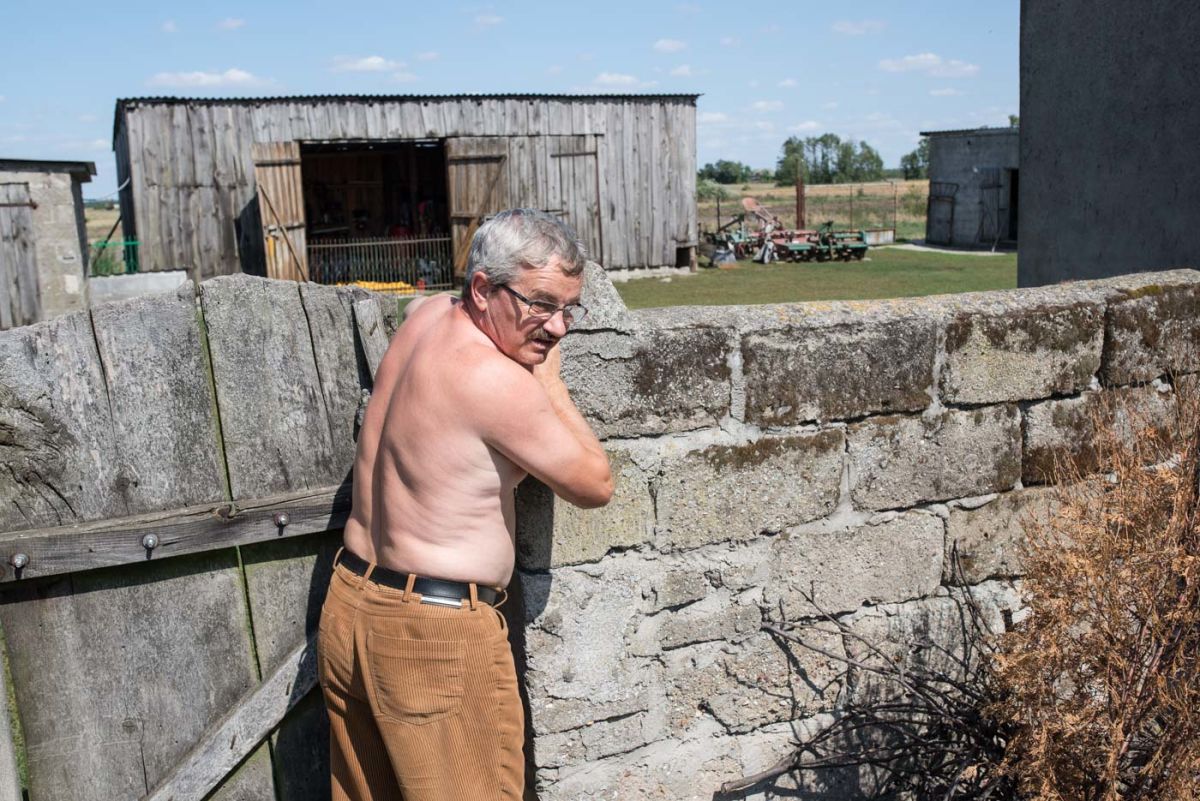
Yet the resistance is visibly growing. Ultimately, we all pay for climate change and environmental destruction, and only a small clique profits from it. Mr. Solorz-Żak bought his majority stake in ZE PAK for 67.3 million zloty (15.5 milion EUR). From the beginning, the privatisation raised many doubts. The scrap value of the mine’s equipment alone was reportedly much higher. Today, Mr. Solorz-Żak wants to sell the power plants because the EU’s carbon dioxide emissions allowances are being terminated. The question of who will buy the plants and whether or not the Polish taxpayers will again have to pay for the elites’ unwavering faith in the future of extracting black gold remains open.
Text: Jaś Kapela
Photos: Jakub Szafrański
Translation: Michał Augustyn
This text was originally published in Polish on Krytyka Polityczna under the title ‘They should close this mine and go to hell’.
The text is part of an upcoming Bankwatch publication, with stories of local communities building post-coal futures in central and eastern Europe, called ‘Heroes of Just Transition’, to be launched Dec. 5 at the COP in Katowice.
